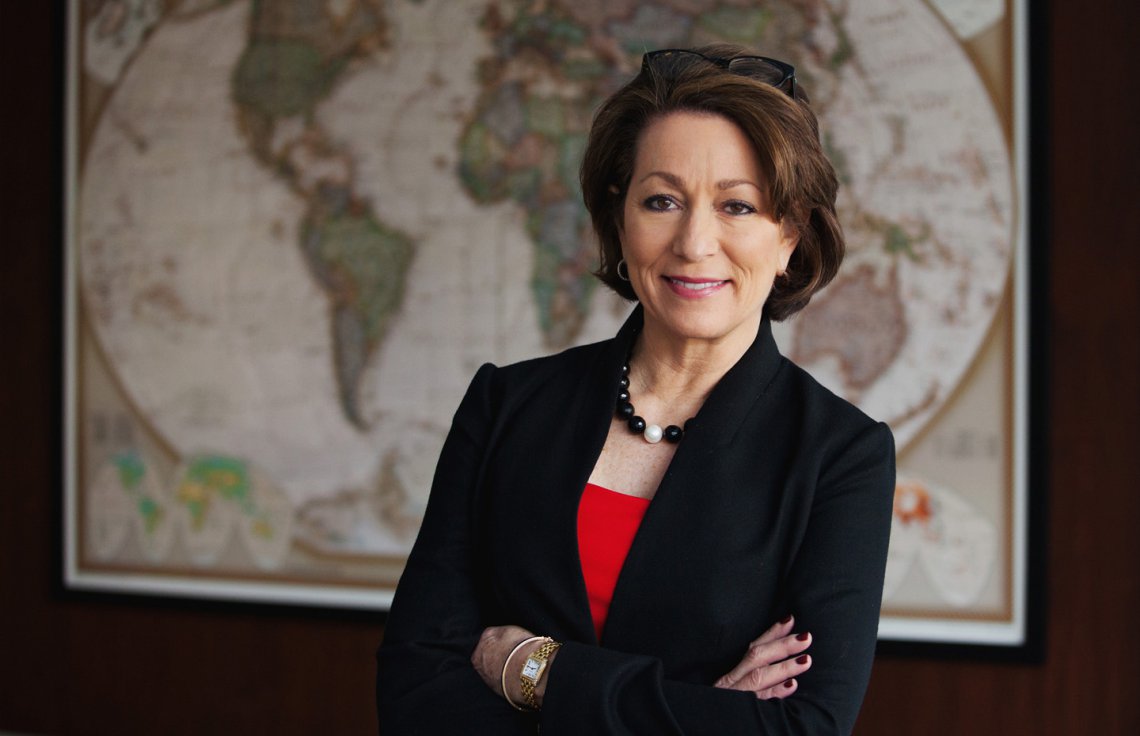As early as the 8th grade, Susan Goldberg knew that she wanted to be a journalist. But without any role models or a roadmap to reference, the only way for her to succeed was to create her own path. Susan never stopped pursuing her passion and has been moving up within the ranks of the publishing industry ever since. Today, Susan is the editor in chief at National Geographic, and as the first woman in company history to hold this title, she is paving the way for women in journalism everywhere.
Susan has seen numerous changes within the industry throughout the progression of her career—from the rise of women majoring in journalism, to witnessing the transitional bridge of print to digital media. At NatGeo, she is bringing change to the traditional newsroom by putting an emphasis on cross-platform storytelling. “It’s not an easy transition,” she says, “but seeing the enthusiasm of folks to experiment and try to do things in new ways is highly rewarding.”
Susan may not have had role models when she was young, but she has become a leading role model for women (and men!) in media, and is a great example of how passion, leadership and courage in the presence of change can bring great success. Today, Susan shares with us her “big picture” viewpoint of NatGeo, as well as her perspective on the current publishing landscape.
This interview was originally published on April 28, 2015.
Her Starting Point
When did your passion for journalism begin? Who were some of your role models when you were in journalism school and just starting out in the field?
I’m not sure where or when my passion for journalism began. All I know is that by 8th grade, when we had to write a paper about what we wanted to do, mine was titled, “Opportunities in Journalism” (though I spelled opportunities wrong). After that, I never stopped wanting to be a journalist. When I was starting out, I’m not sure I had role models. But I was deeply affected by the reporting about Watergate and the Vietnam War; both showed how uncovering the truth could change the world.
You postponed your last year of college to take a full-time reporting job after interning at the Seattle Post-Intelligencer. What was your reasoning behind this decision, and do you think you made the right choice?
Leaving college to take a full-time job as a reporter—after an eight-week internship—was, at the time and in retrospect, 100 percent the right thing to do. It was a way to start my career at a large newspaper, which was precisely what I wanted. I knew I could always finish up college later—and that’s what happened.
How did your previous jobs prepare you for your current role?
I’ve learned a great deal in every job—from the basics of covering every kind of story as a young reporter, and understanding the imperative of having the highest standards of ethics and accuracy, to the nonstop learning curve when you have the privilege of leading newsrooms of creative, brilliant people at a time of profound change to our business. So it’s hard to look back on the last 35 years and pick out one thing that prepared me. If anything, perhaps, I’d say the quality of being resilient has served me well, no matter what the reporting, editing, or management challenge. There’s a lot to be said for muscling through the inevitable hard times with as much optimism and grace as you can muster.
Journalism has long been considered a place for the “old boys’ club.” How did you deal with that stereotype when you broke into the field? Does it still exist today?
Journalism really isn’t that much of an “old boys club” at the college level—most journalism school graduates these days are female. What concerns me is what happens between the time when so many young women enter the profession and, 20 years later, when so few of them have ended up leading newsrooms. Unfortunately, for top editing jobs, it has been and remains an old boys club. In fact, if you look at the number of women in leadership roles at newspapers now vs. 10 years ago, we are going backwards; online newsroom leadership is no more diverse. How do you deal with it? First and most important, focus on the work and try your best everyday. Second, always take a seat at the table—in other words, participate, be engaged, and stand up for yourself. Finally, sometimes you just have to ignore the garbage that comes your way and not let someone else’s issues or ignorance throw you off your game.

Her Big Break
As a woman, you have been a lot of “firsts” in various newsrooms in your career. How is being the first female Editor-in-Chief of National Geographic Magazine different?
I’m very proud to be the editor in chief of National Geographic; it truly is an honor. And given the changes in our industry just over the span of my career—from the typewriter to the age of digital information—it is a thrilling time to take on this role. But my belief is that our society will be a better and more equitable place when having a female editor is not such a notable event. I felt the same way when I became the first female editor of the San Jose Mercury News and the first female editor of the Cleveland Plain Dealer. Women have a long way to go to achieve anything close to parity among leadership of major news organizations, whether print or digital. This concerns me more than ever; it’s an issue that we, as an industry, need to address.
What unexpected experiences—both challenging and rewarding—have you had in the last year?
The biggest challenge is working at a “legacy organization” (a terrible term) at a time of seismic change in our industry, and getting everyone to understand why a place as famous as National Geographic needs to adapt what it does to today’s realities. It’s not an easy transition, but seeing the enthusiasm of folks to experiment and try to do things in new ways is highly rewarding.
We’re all so familiar with that iconic yellow border in print, yet behind it all is a team of editors, photographers, writers, etc. How does the company culture at National Geographic differ from other newsrooms you have worked in?
I never worked at a magazine before, let alone one that was built on a monthly schedule. Everywhere else I worked always had daily deadlines, and, with online news, non-stop deadlines, sometimes measured down to the second. So that is the biggest difference. But with National Geographic putting out news and information every day, too, those gaps in culture and urgency are narrowing significantly. The main difference that remains is that at NatGeo, we’re already talking about what stories we want to do in 2017 in the magazine! I don’t know anywhere else that even begins thinking that far in advance (and, of course, we’ll change those plans as we go along—but the fact that we even talk about it still amazes me!).
In your first year at Geographic, you went from Executive Editor of News and Features to Editor in Chief and have put a lot of emphasis on digital media. How do you hope digital changes the traditional National Geographic experience?
I’m excited about how digital storytelling can both enrich the traditional storytelling we do in the magazine and stand alone as independent, excellent storytelling in its own right. At a minimum, our graphics can come to life online; we provide additional photos; we have video; we have interviews with our photographer or writer; often, we have additional stories or breaking news stories on the same subject that’s been in the magazine. At its best, we can creatively take the subject of a magazine story and figure out how to present it in a totally new way, like we did recently in bringing to life online our February cover story about how soldiers have been affected by traumatic brain injury.

Her Perspective
What has been your greatest accomplishment thinking back on your first year at National Geographic?
Getting people to view our work across platforms as important as any one platform.
You straddle the print world and the digital world by supervising the magazine and news. What are some of your management strategies and how do they differ across platforms?
I don’t think my management strategies are really any different. For every platform, I want to do five basic things: 1. Do stories that make a difference; 2. Do stories others can’t do; 3. Do stories that are topical (be part of the conversation); 4. Act with urgency; 5. Remember who we are. So all that I do, no matter what the platform, goes into accomplishing those goals.
The field of journalism has changed drastically in the last 30 years, and job offers for young journalists can be few and far between. What advice would you offer to those female reporters trying to kick-start their careers?
My advice would be the same for any journalist—whether female or male—in getting started: just start. Your first job does not have to be your “forever” job (if there even is such a thing). It’s just a way to build your experience, learn things, get to understand yourself and your strengths and weaknesses and be able to market yourself for your next job. So just start. Hopefully in an area that is as close to your “perfect” job as you can find. But don’t wait for that perfect job. That’s just a waste of time.
Outside of work, you’ve stayed actively involved in journalism organizations like ASNE and RCFP. Besides journalism, what other activities keep you sane in your down time?
I love to cook and entertain; there's something very gratifying about feeding people—and, I like to joke, chopping things into small bits can be very therapeutic! Really, cooking is a lot like daily journalism: you start with fresh ingredients, combine them in interesting ways, and come out with a new result every time.
And finally, what do you wake up looking forward to? What’s next for your career?
I’ve always loved my jobs because I never know how the day will unfold—what might happen and how we will creatively react to it. That makes every day fun and challenging. As for my career, I love my job and see no reason to go anywhere else!
You May Also Like
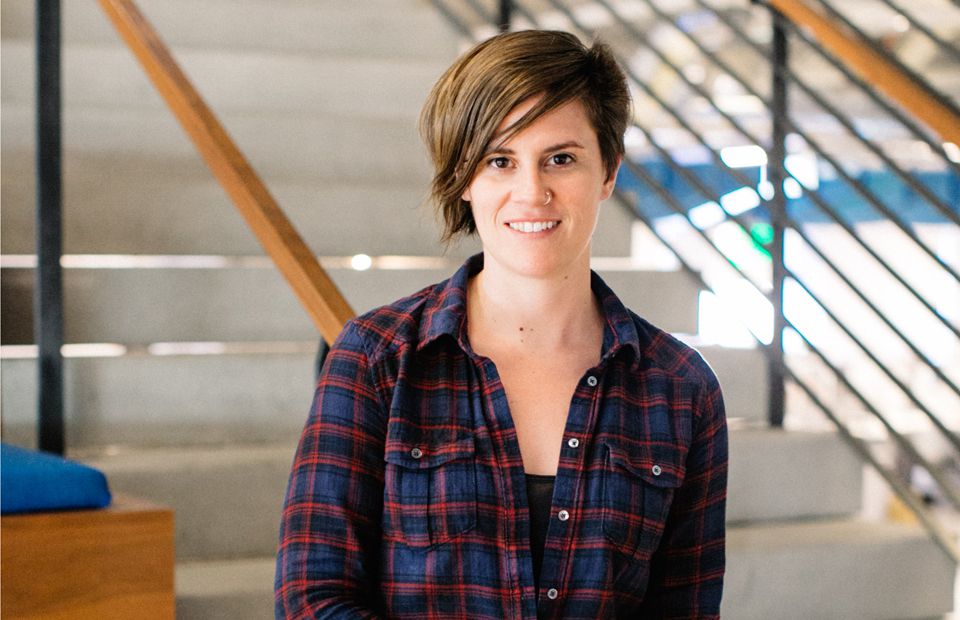
Media
How to Use Positive Reinforcement at Work—and Other Advice from a Pandora PM
"My advice to anyone who wants to get into product management is: check your ego at the door."
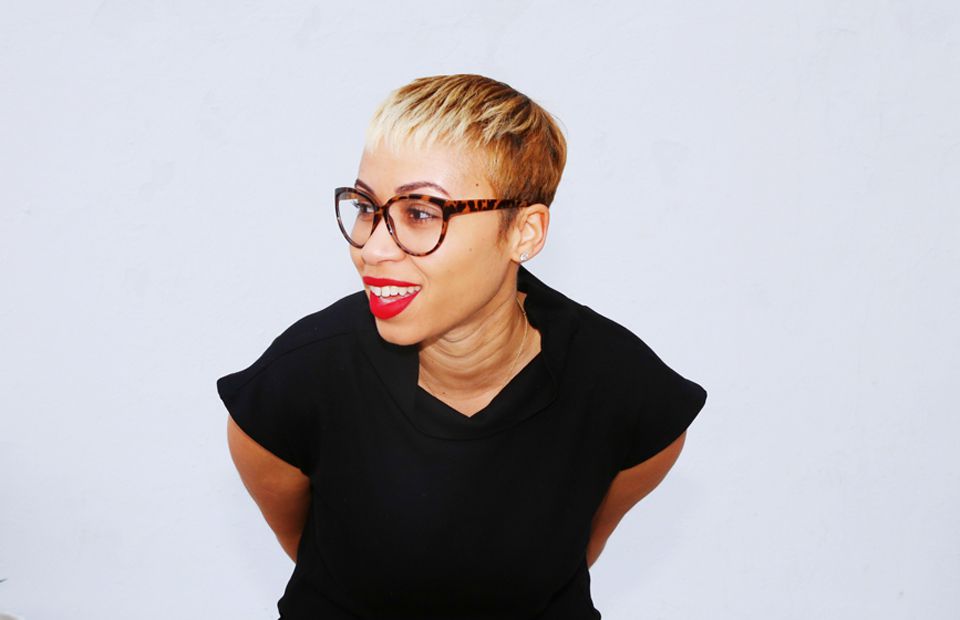
Media, Communications + Public Relations
How to Take Risks, Make a Switch, and Find a Career You Love—From a Woman Who's Done It 4 Times
Making your wildest dreams come true starts with understanding yourself—and Ahyiana Angel can help.
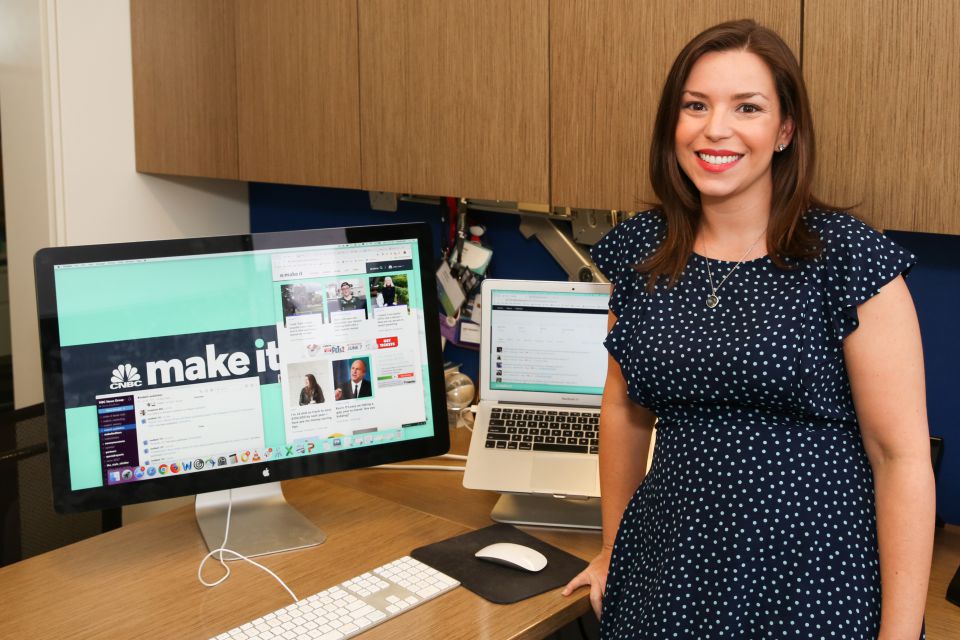
Communications + Public Relations
Creating Content That Empowers Audiences with CNBC's Digital VP and Managing Editor
This week, we interviewed Jenna Goudreau, the VP and managing editor of CNBC Digital. Let's learn how she keeps her powerhouse content creation machine going.
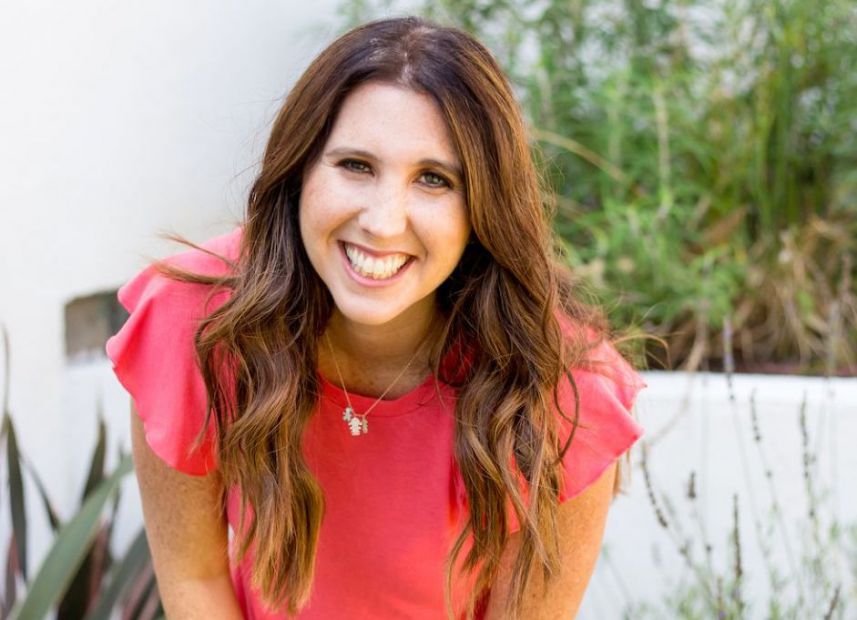
Entertainment
Working Creatively From Home with Cathy Heller
Cathy Heller is a singer, songwriter, entrepreneur, mother—and now, an author. Determined to lift others up to the "happiest versions of themselves," this queen of the hyphenated job title, leads by example. She shared how to build a fulfilling career in a creative field—all while working from home.
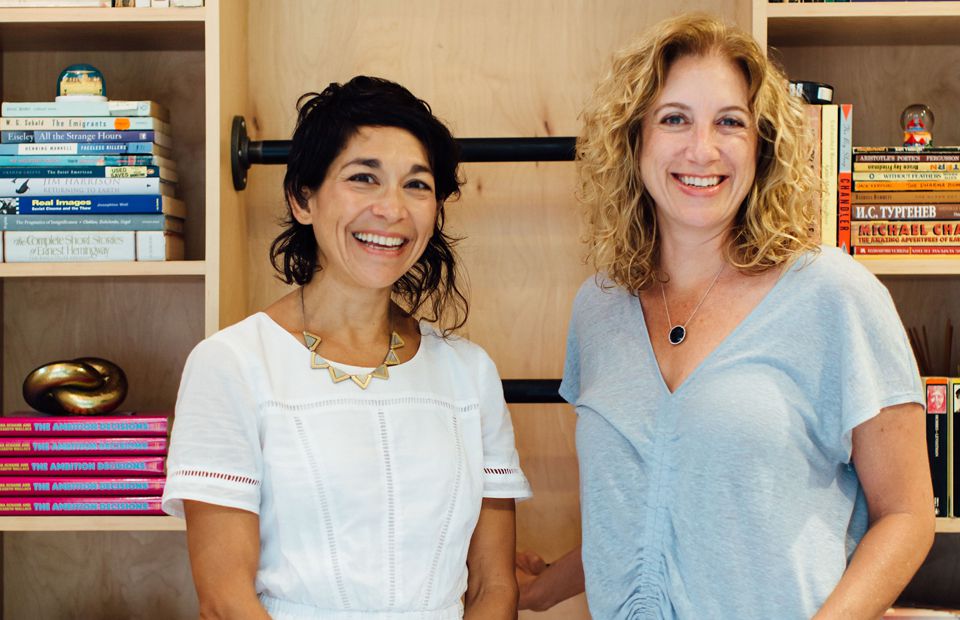
Media
Women, Work, and What It's Like to Write With Your Best Friend—From the Authors of The Ambition Decisions
"We should all give ourselves permission to challenge the things we think can’t be challenged."
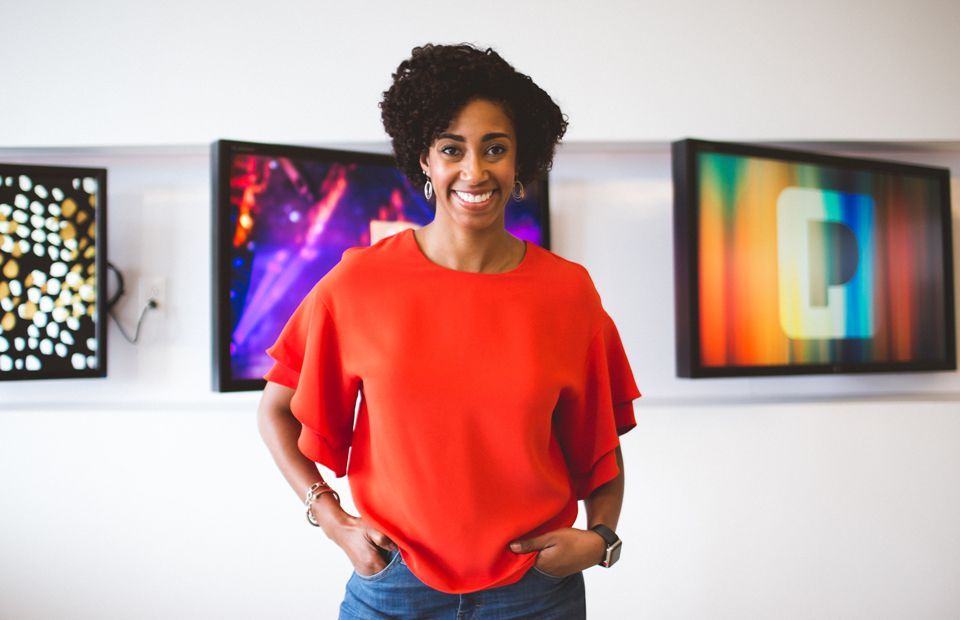
Media
A Director at Pandora on Staying Present, Celebrating Others, and Learning From Failure
"Share your wins, but most importantly, share what your growth areas are, share when you fail, share how you bounced back."
Get the Best Career Advice Delivered To Your Inbox
Join our newsletter to stay in the loop.
